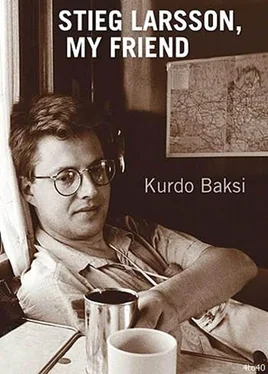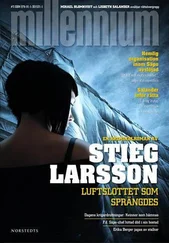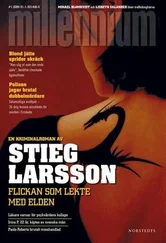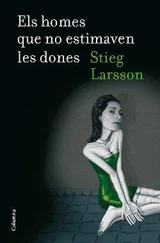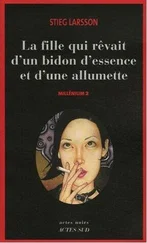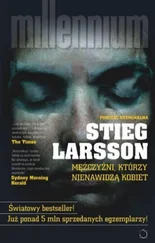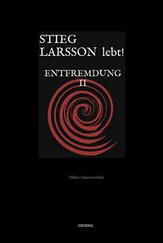It wasn’t the actual travelling that attracted him, though. More relevant was the fact that this way of gathering knowledge would help him to become what he now knew he wanted to be: a journalist. He had already made up his mind to enrol on a course in Stockholm. As if to mark the fact that this signalled a new phase in his life, he changed his first name.
That was when he became Stieg Larsson.
As with so much else in his life, his name change was something he preferred not to talk about, and he never told me exactly why he did it. Perhaps he was afraid that people would find it a bit odd. If there was anything he avoided like the plague, it was seeming to pretend to be somebody special.
Yet again I found myself asking myself the same old question: Who was Stieg?
I think the only answer that holds water is that he was a combination of the people who influenced his life, not least his grandfather Severin, his grandmother Tekla, his mother, Vivianne, his father, Erland, and his partner, Eva. But there was also an element of escapism. He was always aware of the need to keep pushing at the boundaries. He moved from Umeå to Stockholm. Took his typewriter and telescope with him. But he needed to keep pressing on. New goals, new challenges. The letter added to his first name fitted the pattern, because it also hid something. Stieg always kept something hidden, despite the fact that he invariably gave so much to everyone with whom he came into contact.
It suddenly occurs to me that it could well be this ability to hide things that made him unique as a writer of crime fiction. He had so many secrets – perhaps the most extreme example of that is the crime trilogy he wrote at night. Quite a lot of people knew that he was writing, and he also referred frequently to crime novels by other authors, claiming that he could write at least as well as they did. But that is not what I mean. The fact is that he wrote three thumping great novels before getting round to submitting them to a publisher. How common is that? Why did he do it? In so many ways, Stieg was and always will be an enigma. The bottom line is that part of his character was mysterious.
At the same time, few people are as generous in their relationships as Stieg was. He gave, and so many of us were keen to receive what he had to offer. I have no doubt at all how he would have responded to Raymond Carver’s two momentous questions.
Did you get what you wanted from this life?
Yes.
And what did you want?
To be loved.
The first conversation
The most stereotyped crime novels generally begin with a telephone call. A chief inspector is woken up in the middle of the night by persistent ringing. Eventually he gropes sleepily for the receiver, checks the clock and is informed that a murder has been committed. He has to stagger out into the freezing-cold winter’s night and make his way to the scene of the crime. The drama can begin.
It was not in the middle of the night that the story of Stieg and me began, but it did start with a telephone call. I still remember exactly when it was: Tuesday, 4 February, 1992. When I reached for the telephone, which was ringing just as persistently as in a sleepy chief inspector’s bedroom, the voice I heard skipped the usual polite preliminaries: “I hope I’m not disturbing you at an inconvenient moment. I have something important to discuss.”
At the time I was a member of the 21 February Committee and was sitting in their newly established headquarters in the Kungsholmen district of Stockholm. The committee’s name referred to a strike that had been called in reaction to the shooting of eleven people in Stockholm by an individual the media had labelled the Laser Man. Hardly a day passed without the newspapers printing long articles about this lunatic who had been wandering around in broad daylight, aiming his laser sights at dark-skinned immigrants. The capital was on tenterhooks for several months, especially since one of the victims, a Swedish-Iranian interpreter, had been shot dead on 8 November, 1991. Another ten immigrants had been seriously wounded, some of their injuries potentially fatal.
It would be no exaggeration to say that during these terrible months Stockholm felt like a city under siege. If not for all its citizens, then certainly for those with dark skins. It was a time many commentators called the most repugnant in recent Swedish history – a period full of menace and political betrayal.
I quickly realized that the caller had no intention of congratulating me on my role as a strike organizer. He continued without pausing: “You have said on the radio and television that if it were not for immigrants, Sweden would grind to a halt. You’re absolutely right. But why is it only immigrants who are allowed to take part in the strike? What you have said excludes the majority of the population. How do you envisage including my solidarity with Swedish immigrants?”
“Er…” I began, but was immediately interrupted.
“I was born in Skellefteå of two Swedish parents, but I’ve lived for many years in the Stockholm suburb of Rinkeby, which has a high proportion of immigrant residents. I want to take part in the strike on 21 February, because racism isn’t just an immigrant problem, it’s a problem for Sweden as a whole.”
Obviously, I understood what he was leading up to, but he didn’t allow me to get a word in edgeways before making his own proposal.
“I want you to call a press conference and say that everybody in Sweden, irrespective of the colour of their skin, their gender, their mother tongue, their nationality, their homeland, their sexual orientation or their religion, is welcome to take part in this strike to demonstrate solidarity with immigrant Swedes at 10.00 this coming Friday.”
Only then did he explain who he was. I recognized his name, having been present once or twice when he had delivered an address, usually at some demonstration or other, or at a rally to express solidarity with refugees. Most importantly, I knew he was the author of the pioneering book Extremhögern , an analysis of anti-democratic movements that had been published the previous year. It was a book I had been unable to put down.
Nevertheless I would be lying if I were to claim that I believed for one second that this telephone call was the beginning of a lifelong friendship.
Before we hung up – I had hardly said a word – he invited me to come and listen to his lecture “The Far Right in Sweden and Europe”, to be delivered that same evening at the Swedish W.E.A. in Stockholm. I spent some considerable time wondering if there were any reasons why I shouldn’t go.
I realized immediately that Stieg had put his finger on something important. Of course it was wrong to exclude anybody from a demonstration intended as an expression of frustration at feeling excluded. But it wasn’t so easy to change such a significant decision – not when you had been voted into the office you held by 128 ethnic, anti-racist and religious associations and intercultural organizations all over Sweden. There were many different opinions to take into consideration. In such circumstances key decisions must be taken by a committee, which in this case comprised thirteen members with views that were often very different.
And time was short. All the leaflets and suchlike had already been ordered from the printer’s and posters had even been sent to all the towns where rallies were to be held. Then had come that urgent telephone call to put the cat among the pigeons. I had no doubt that this Stieg Larsson was absolutely right, however. In a strange way I seemed to have known that all along: the telephone call was simply the catalyst that spurred me to do something about it.
Читать дальше
